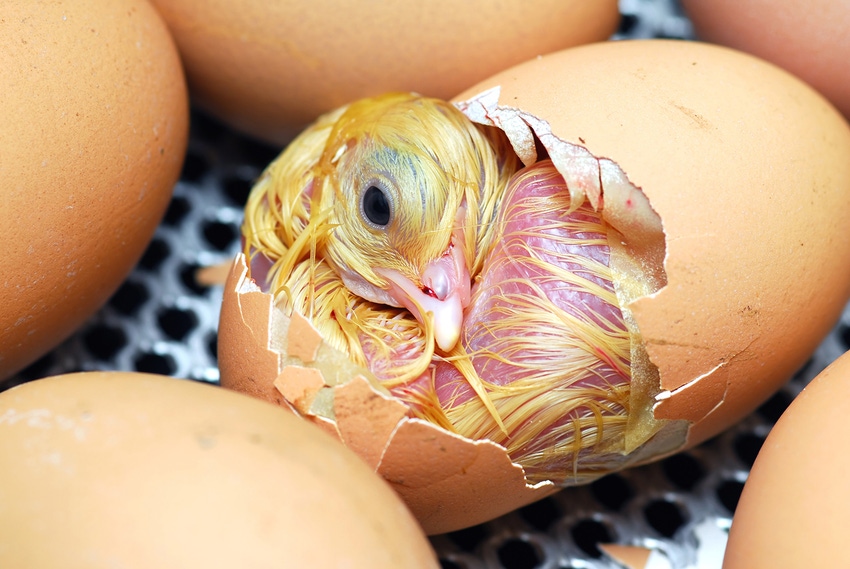Technique could be developed into inexpensive, animal welfare-friendly way to predict gender of chicks before they hatch.
December 16, 2016

Using an imaging technique called optical spectroscopy, it is possible for hatcheries to accurately determine the sex of a chick within four days of an egg being laid. This non-destructive method picks up on differences in the fluids contained in an egg from which a cockerel will develop versus one from which a hen will hatch.
Having such a reasonably cheap method by which to sex eggs can lead to more ethical practices in the poultry industry, according to an article in Springer's journal Analytical & Bioanalytical Chemistry. It could prevent the annual culling of 7 billion day-old cockerels worldwide that have little economic value but whose female siblings help produce eggs to meet the current global demand of about 68.3 million tons of eggs per year, said lead authors Roberta Galli of TU Dresden in Germany and Gerald Steiner of TU Dresden and Vilnius University in Lithuania.
The meat from modern laying hen strains is not as edible as that from broiler strains. Because their meat is, hence, of little economic value, many producers choose to cull day-old cockerel chicks that will not add to egg production. In North America and Europe alone, approximately 790 million chicks are culled annually. The issue has triggered increasing research aimed at providing suitable alternatives.
The current study is an extension of previous work by the German research team to which Galli and Steiner belong that found that imaging techniques can be used to sex incubated chicken eggs. This can be done by noting gender-specific biochemical differences in the embryonic blood contained within an egg shell.
In this study, a laser emitting at a wavelength of 785 nanometers was used to investigate 27 eggs up to 11 days after they were laid. The researchers already were able to note sex-related differences in the near-infrared fluorescence spectrum within 3.5 days after incubation. Further analysis showed that the blood of male eggs is characterized by a specific fluorescence band located at around 910 nanometers.
The team tested whether these fluorescence characteristics, together with changes in the wavelength of light, could be used to classify whether a hen or a cockerel will develop from an egg. When tested on 380 eggs, this method accurately did so in 93% of cases.
"In ovo sexing based on spectral analysis is non-invasive, does not require extraction of egg material and does not use consumables. Moreover, the method is applicable during the fourth day of incubation, before onset of embryo sensitivity at day seven, and is, therefore, in agreement with animal welfare," Galli said.
Steiner said there is potential to use such fluorescence techniques to develop industrial systems for egg sexing that are not based on expensive spectrometers. It can be done using a few light detectors with suited bandpass filters to measure the signal intensity in selected spectral ranges.
You May Also Like

.png?width=300&auto=webp&quality=80&disable=upscale)

